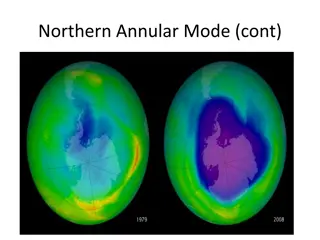
Dwarf Galaxies Stellar Mass-Metallicity Relation
Explore the significance of ultra-faint dwarf galaxies in understanding galaxy formation physics, the origin of Plateau MZR relation, and engineering dwarfs at Galaxy formations EDGE. Discover how the Metallicity-Stellar Mass Relationship is sensitive to feedback processes and why the smallest galaxies play a crucial role in cosmic evolution.
Download Presentation

Please find below an Image/Link to download the presentation.
The content on the website is provided AS IS for your information and personal use only. It may not be sold, licensed, or shared on other websites without obtaining consent from the author. If you encounter any issues during the download, it is possible that the publisher has removed the file from their server.
You are allowed to download the files provided on this website for personal or commercial use, subject to the condition that they are used lawfully. All files are the property of their respective owners.
The content on the website is provided AS IS for your information and personal use only. It may not be sold, licensed, or shared on other websites without obtaining consent from the author.
E N D
Presentation Transcript
NAM Faint of the Universe : Dwarf Galaxies Stellar Mass-Metallicity Relation Astha Prof. Justin Read, Dr. Noelia No l and the EDGE collaboration 1
Ultra Faint Dwarf Galaxies 1000-10,000 stars Extremely less luminous, (L <105L ) Ten million times less luminous than Milky Way Rich in Dark Matter 300 times more than luminous matter V. Belokurov, S. Koposov (Institute of Astrophysics, Cambridge). Photo: Y. Beletsky (Carnegie Observatories) 2
Why are the smallest galaxies so important? Milky Way Credits: esa.init 3
Sensitive to Galaxy formation physics MZR : Stellar Mass-Metallicity Relationship The MZR is uniquely sensitive to feedback processes because it directly reflects the metal retention and ejection mechanisms within a galaxy[1][2] Supernova Galactic Outflows [1] Agertz et al. 2019, [2]Rey et al. 2025 4 4
What is the origin of Plateau MZR Relation? Observations of ultra-faint dwarf galaxies show a plateau in the metallicity around [Fe/H] -2.5. Plateau Answer using EDGE simulations! MW Dwarfs Plateau/Scatter? 5
Engineering Dwarfs at Galaxy formations EDGE high-resolution zoom-in cosmological radiation-hydrodynamics simulations of dwarf galaxies 6
EDGE 1 EDGE 2 x=3pc, mdm=940 M Some RT SNe Ia/II Stellar Winds Re-ionisation [Fe/H] and [O/Fe] CDM M200=107-109.5M Non-eq chemistry RT as standard 8-element chemistry Improved Yields Improved Re-ionisation CDM + WDM M200=1010M Rey et al. 2025 7 7
What is the origin of plateau MZR Relation? 1.Tides Plateau 2.Quenching MW Dwarfs Plateau/Scatter? 8
What is the origin of plateau MZR Relation? 1.Tides 2.Quenching: Time evolution of MZR 10
QUENCHING : With EDGE2 Simulations Local Volume Database, Andrew Pace 2024 Scatter Galaxies evolve along MZR 11
QUENCHING : With EDGE2 Simulations Local Volume Database, Andrew Pace 2024 Scatter Galaxies evolve along MZR 12
Origins of scatter in the MZR : DENSITY Mean Stellar-Metallicity vs Stellar mass At Start of star formation M 13
Origins of scatter in the MZR : DENSITY At 104M At 103M 14
Origins of scatter in the MZR Other effects such as : Dilution Mergers Confinement : In next slides Overall, in regards to quenching, Density can explain the trend at very low metallicities, but not explain the highest metallicities in MZR 15
Conclusion : Reason for Plateau Tides : Not sufficient evidence for most galaxies Quenching: Density can explain the trend at very low metallicities, but not explain the highest metallicities in MZR Confinement: Proved that Dwarfs-of-Dwarfs in EDGE climb to high metallicities due to confinement. Thus, confinement aids in the rapid evolution of the Subhalo, populating the plateau region. 24 Dwarfs enrich rapidly to reach to <[Fe/H]> = -3.
THANK YOU! aa07223@surrey.ac.uk Chaturvedi et al. in prep 25
EXTRA SLIDES 26
Negligible further evolution Smallest Masses Oldest Ages Simplest Assembly history 33
Previous Attempts 1. Pop III stars , tensions with observations ; Pair Instability Supernovae: 140-300 M , rare in dwarf galaxies. 2. IMF variation: Top-heavy IMF increases number of supernova, but different IMF in star forming regions, is yet to be confirmed plateau/scatter? 3. Environment Effects : Pre- enrichment by the MW environment, tidal stripping Collins and Read 2022 34
EDGE 2 SIMULATION SUITE [1] Original volume =100Mpc x=3pc mdm=940 M Radiative transfer from stars, using setup described in Agertz et al 2020 EDGE2 employs non-equilibrium primordial and molecular chemistry Rosdahl et al. 2013 and Nickerson et al. 2018 EDGE2 an eight-species chemical model (C, N, O, Mg, Al, Si, Fe, and Eu), updated metal yields from NuGrid (Pignatari et al. 2016; Ritter et al. 2018). Floor in Oxygen metallicity , Zo=10-3Z [1] Rey et al. 2025 35 35






















